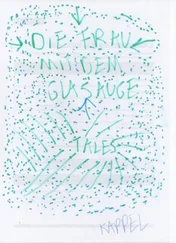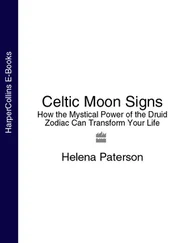Jodorowsky, Alejandro - Psychomagic - The Transformative Power of Shamanic Psychotherapy
Здесь есть возможность читать онлайн «Jodorowsky, Alejandro - Psychomagic - The Transformative Power of Shamanic Psychotherapy» весь текст электронной книги совершенно бесплатно (целиком полную версию без сокращений). В некоторых случаях можно слушать аудио, скачать через торрент в формате fb2 и присутствует краткое содержание. Год выпуска: 2010, Издательство: Inner Traditions Bear & Company, Жанр: Старинная литература, на английском языке. Описание произведения, (предисловие) а так же отзывы посетителей доступны на портале библиотеки ЛибКат.
- Название:Psychomagic: The Transformative Power of Shamanic Psychotherapy
- Автор:
- Издательство:Inner Traditions Bear & Company
- Жанр:
- Год:2010
- ISBN:нет данных
- Рейтинг книги:4 / 5. Голосов: 1
-
Избранное:Добавить в избранное
- Отзывы:
-
Ваша оценка:
- 80
- 1
- 2
- 3
- 4
- 5
Psychomagic: The Transformative Power of Shamanic Psychotherapy: краткое содержание, описание и аннотация
Предлагаем к чтению аннотацию, описание, краткое содержание или предисловие (зависит от того, что написал сам автор книги «Psychomagic: The Transformative Power of Shamanic Psychotherapy»). Если вы не нашли необходимую информацию о книге — напишите в комментариях, мы постараемся отыскать её.
Psychomagic: The Transformative Power of Shamanic Psychotherapy — читать онлайн бесплатно полную книгу (весь текст) целиком
Ниже представлен текст книги, разбитый по страницам. Система сохранения места последней прочитанной страницы, позволяет с удобством читать онлайн бесплатно книгу «Psychomagic: The Transformative Power of Shamanic Psychotherapy», без необходимости каждый раз заново искать на чём Вы остановились. Поставьте закладку, и сможете в любой момент перейти на страницу, на которой закончили чтение.
Интервал:
Закладка:
The ancients also attributed a role of the ally to a number of symbolic objects: the magic texts were recited over an insect, a small animal, or even a collar. Also bands of flax, wax figurines, feathers, or hair were used . . . Finding in the texts traces of these practices, I gave myself up to reflecting on the projections people make onto objects, and I asked myself how to use this in a positive way. Magicians would engrave the names of their enemies on vases, which then were shattered and buried, causing similar destructions and disappearances for their adversaries. The portraits of the “bad guys” were painted on the soles of royal sandals, so the king trampled the potential invaders every day. In Psychomagic, I have often resorted to the same “primitive” principles—but exclusively to a positive end. I advise people to “bring evidence against” an object, to assign it a name . . . Along the same line, from the Hittite sorcerers, I learned the concepts of substitution, replacement, and identification: the magician, in effect, does not shatter evil by finding its origins, but rather ends it, eradicating it from the victim’s body or spirit and sending it to hell. Based on an old text, “an object will be attached to the right hand and foot of the officiant, then withdrawn and attached secondly to a mouse, while the officiant says: ‘I remove the evil and I attach it to this mouse’; and then frees the mouse.” In the same way, Pachita removed the evil by attaching it to a plant, a tree, or a cactus, which had the effect of making the plant die before our very eyes. It is also possible to replace the victim with a lamb or a goat: it is the old concept of sacrifice by substitution where the animal takes the place of the patient. One ties a turban on the head of a goat and then slits its throat with a knife that has previously been put to the throat of the suffering patient . . . According to Jewish magic, an evil force can be a mistaken hoax, induced by error. To do this, one disguises himself as the person on whom he wishes to vent his anger, changes his name . . . I have myself had the occasion to verify how to change a name, even a handwritten one could prove effective. I also apply this principle to a tarot card: as a rule, the Tower reflects a catastrophe; but why not call it the “Soul and Its God” and, in this way, change it positively? All of these old rituals taught me to use burial as an act of purification.
These are only a few examples of the universal principles of magic acts that I use in Psychomagic, in other words: in therapeutic actions.
FIVE

THE PSYCHOMAGIC ACT
After the magic act, we come to the psychomagic act. In the context of magic that surrounds a sorceress like Pachita, faith plays an essential role. Yet you said earlier that faith is not a prerequisite.
Then, rather than speak of “faith,” let’s use the word “obedience.” I would like simply to say that even if one does not believe in the power of the sorcerer, it is appropriate to remain impartial and to leave an opening for the sorcery to work. Otherwise stated, faith or not, a patient must show enough integrity to follow to the letter the instructions received. If you consult a doctor and, once gone from her office, you do not put the least effort to buying the prescribed medicines, how can you then evaluate the effectiveness of the treatment? If Pachita prescribes whatever act, the person believes it and completes it without seeking to understand. Obedience, that’s all, because of the mysteries that the suggested practice can encompass. As we have already emphasized, all this is part of a culture radically different from ours. The editor of an important Parisian monthly magazine got cancer and asked me if I could introduce him to Pachita. So I brought him to her house; she operated on him and said, “You are healed, but be careful: let six months pass before telling anyone!” He did not obey. As soon as he was back in France, he had exams by a battery of doctors in the hope of confirming the sorceress’s verdict. They old him that he was not healed, and he died three months later. On the other hand, one of my French friends, a reporter for a big film syndicate, already the victim of several heart attacks, under my insistence, was brought to Pachita’s house so that she could “change” his heart. The operation complete, the sorceress asked him to wait three months to tell. After this time had passed, he submitted to exams and an EKG to reveal great improvements. Years have passed, and he is still alive to this day. I can also cite the case of the assistant to the director François Reichenbach. Following a traffic accident, she seemed condemned to be paralyzed. Pachita operated on her, and she began to walk. Some time has passed, and she even has come to thank me for having introduced her to the sorceress. I profited from the occasion to ask her to testify at a conference I gave at the Sorbonne before an audience of about five hundred people. Let me read to you a part of her testimony, as it was recorded and then transcribed:
Jodorowsky:I’m going to interview you. What’s your name?
Claudie:Claudie.
J:You were the assistant to which French filmmaker?
C:I was Reichenbach’s assistant.
J:You had an accident?
C:Yes, in Belize. My vertebral column was smashed, nerves split in my back and nine vertebrae broken. I was in a coma for three months. When I came out of it, they told me I was paralyzed and would never walk again. So Reichenbach called me and said, “I am with Alejandro Jodorowsky. He wants to speak with you.” For me, Jodorowsky was, at the time, someone who had made a completely crazy film. He asked me, “What’s wrong?” and I told him, “I am paralyzed.” He told me this was not serious. “You must go to Mexico to see the sorceress Pachita.” So I went to be operated on without believing any of it. I did not believe in the knife; I did not believe anything at all. She did something that hurt like hell. It was very, very painful. She cut me open from the neck to the coccyx. I had given her a hundred bucks to buy vertebrae.
J:Yes. She buys the vertebrae from the hospital or the morgue, I don’t know . . . At times, she brings a heart in a flask . . .
C:So that was that! But I must tell you one thing: I was sure that one day I would get up and walk. I did not believe in Pachita; I took Alejandro for a madman. But, at least, I was sure of walking again, and I achieved that. Before anything else, I believe in myself.
J:Tells us about your operation!
C:Well, she opened up all of my spine with a knife. I very well felt that. Then I felt her tapping like with a hammer. Then, she returned to me . . . Ah no, she first held a bottle of alcohol over me at ninety degrees. There was a revolting odor of hot blood. The alcohol burned me terribly. An arm passed in front of me, and I didn’t miss the chance. I bit it. Yes, I bit it! At that moment, I fainted. That was not really because of the pain but because of the smell of blood that I couldn’t bear. She turned me over. I asked myself, “But what is she doing?” and I did not see her hands anymore. They were gone. She was inside my stomach, and I didn’t feel anything.
J:That is what you saw . . .
C:That is what I saw.
J:There you go! Sometimes, it is like a transfer, my friends. I do not know if you saw a program on Aikido [a Japanese martial art used as a personal defense; it consists of using the attacker’s own energy to defeat him]. The master arrives and, with the Ki, he is nearly invincible. This is not because against another who is not his own student he cannot do anything. A transfer is necessary. That is to say, we transfer to certain archetypal strengths what we carry inside us, and because we operate this transfer, we make this person a master, a guru, someone who has immense power. He is invisible. It is our transfer. It is completely useful and necessary, but it is a transfer. With Pachita, what is curious is that everyone who comes to see her makes such a transfer.
Читать дальшеИнтервал:
Закладка:
Похожие книги на «Psychomagic: The Transformative Power of Shamanic Psychotherapy»
Представляем Вашему вниманию похожие книги на «Psychomagic: The Transformative Power of Shamanic Psychotherapy» списком для выбора. Мы отобрали схожую по названию и смыслу литературу в надежде предоставить читателям больше вариантов отыскать новые, интересные, ещё непрочитанные произведения.
Обсуждение, отзывы о книге «Psychomagic: The Transformative Power of Shamanic Psychotherapy» и просто собственные мнения читателей. Оставьте ваши комментарии, напишите, что Вы думаете о произведении, его смысле или главных героях. Укажите что конкретно понравилось, а что нет, и почему Вы так считаете.












